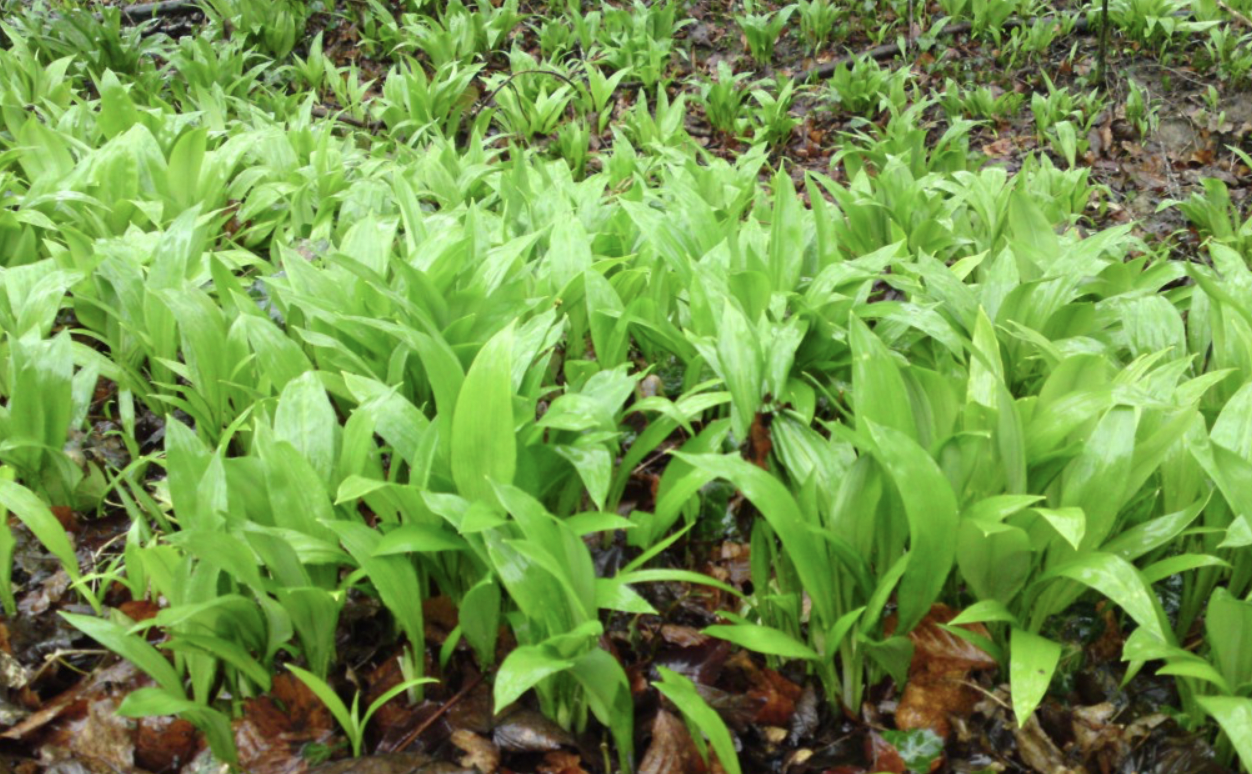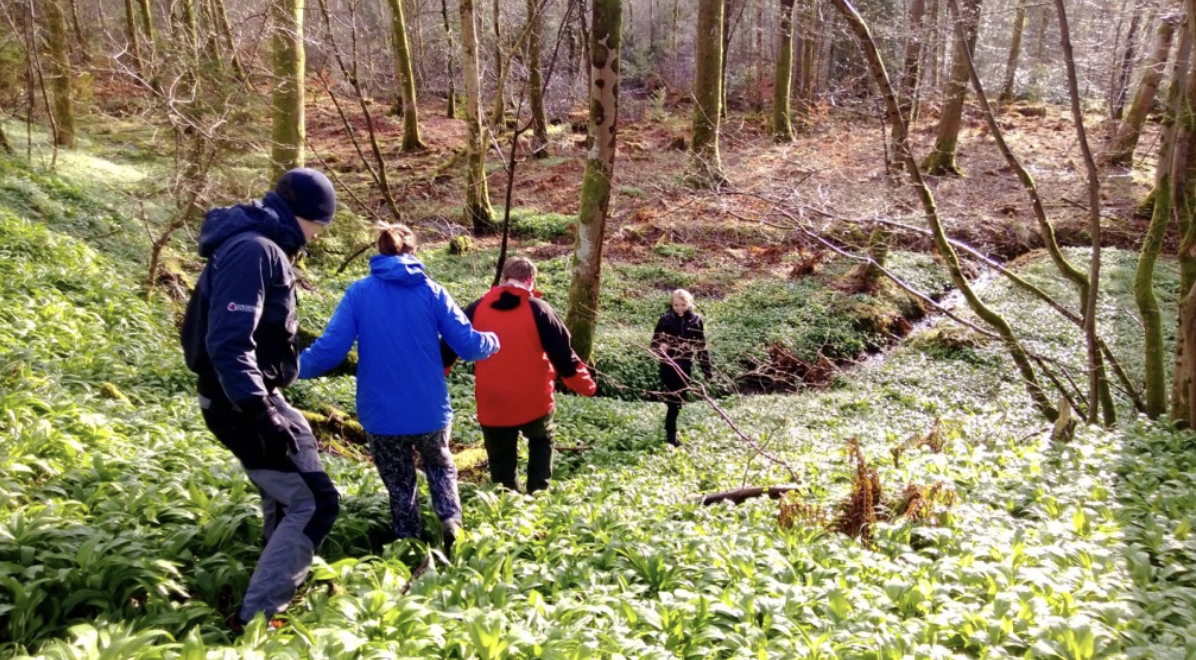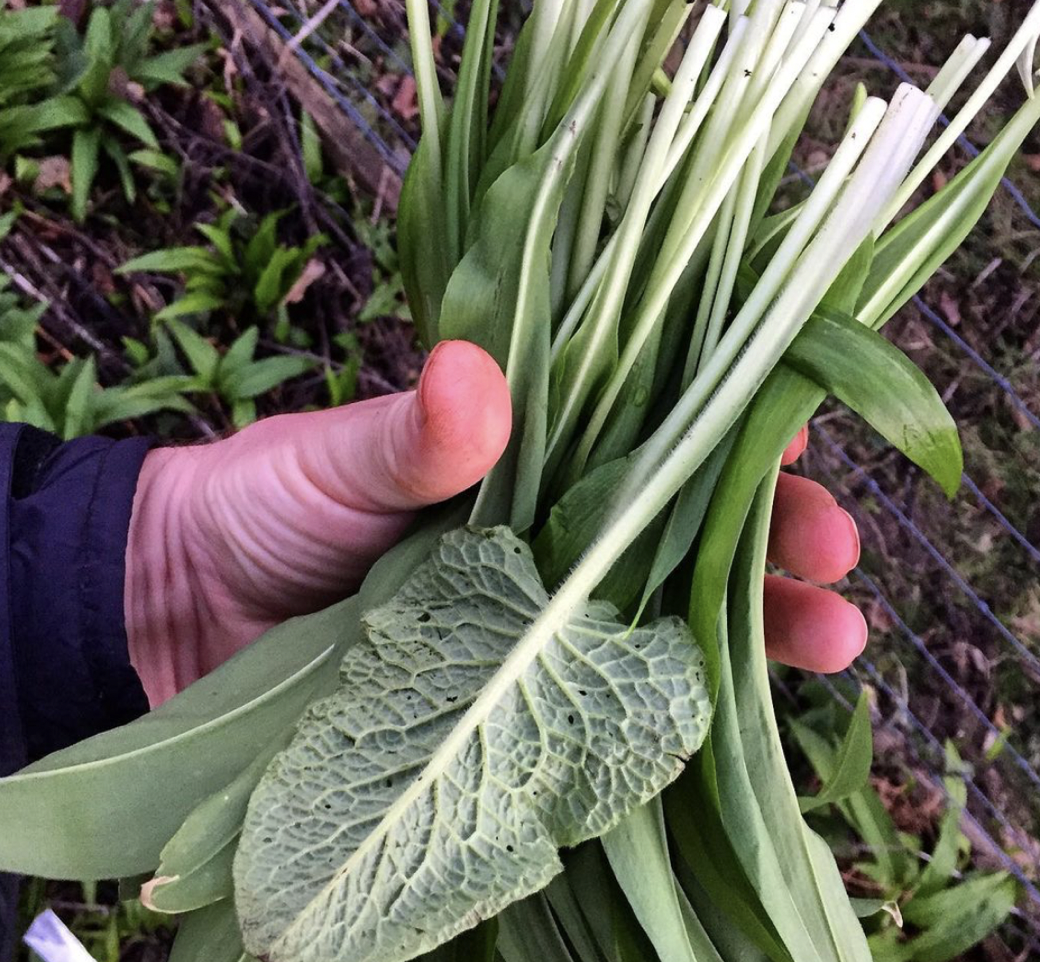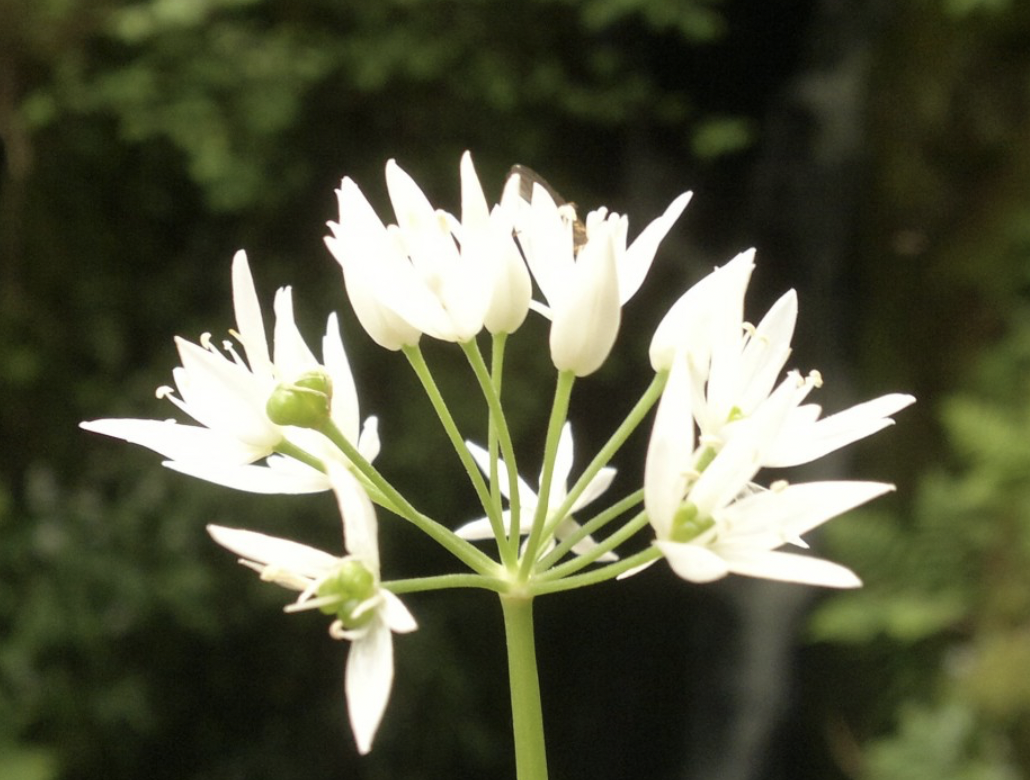Foraging teacher and Association of Foragers member Mark Williams of Galloway Wild Foods explores the growing popularity of wild garlic and suggests some strategies to help keep it abundant.

This article focuses on considerate harvesting of wild garlic. For more detailed information around identification, look-alikes, nutrition and culinary uses, see this article: https://gallowaywildfoods.com/wild-garlicramsons-edibility-identification-distribution/

Wild garlic (Allium ursinum) has become a poster-plant for the resurgent interest in foraging in recent years. It isn’t hard to work out why: it is straightforward to identify, very good for you, delicious, versatile in the kitchen, and is abundant across much of the UK and Europe.
It has become the star of thousands of social media posts, foraging websites, cookery columns, and even TV shows, moving it from the relatively niche world of foraging into the mainstream. Everyone is enthusiastic: even conservation organisations are sharing recipes for it and encouraging people to connect with its charms.
In doing so there tends to be a strong focus on its abundance and deliciousness, but not usually much detail on how to harvest it sensitively. Social media posts are often in such a hurry to show how pretty and delicious wild garlic can be that they forget to share more intimate messages around its ecology, and how to forage it in ways that are sensitive to the plant, its environment, and other creatures - including other foragers - that enjoy or rely upon it. Foraging websites do a little better, often mentioning that it should be “foraged responsibly”, but rarely spelling out how that might best be done. I often get asked on my guided walks about what is an appropriate amount to harvest.
The green blanket of wild garlic that covers so many UK woodlands in spring can give the impression of endless abundance that no amount of harvesting will make a dent in. Fishermen used to feel similarly about herring and cod...right up until they were gone!

Its easy - perhaps too easy - to grab a clump of wild garlic and crop it off at the base, repeat, and in so doing fill a carrier bag in a few minutes. Several bag-fulls later and there’s a bit of a bald patch on the forest floor…but no problem - it will be back just fine next year….won’t it?
The principles of the Association of Foragers recognise that each species that is foraged and each location in which foraging takes place require their own set of skills and insights. In this respect it is impractical and undesirable to impose a comprehensive set of rules around foraging. But that doesn't mean its not important to understand the deeper ecological significance of individual species: foraging is as much about learning and cherishing as it is about harvesting and eating.
Below I’ve outlined a few of the less discussed ecological roles of wild garlic, and a little about its life cycle and resilience. I’ve added some thoughts on why and how to considerately harvest it so that, as it grows ever more popular, it won’t suffer from its popularity. I have no doubt that most of these points will be second nature to many foragers, but I hope its helpful to collect them in one place.
Wild garlic is so prolific, and most foragers so considerate, that we are a very long way from there being any issues around general “over- harvesting” of wild garlic in the UK. It would be good to keep it that way. On more local levels, especially near large urban populations, or where it is being harvested commercially, inconsiderate wild garlic harvesting year-on-year has the potential to significantly diminish wild garlic colonies.

Ecology
Wild garlic is allelopathic, which means it actively deters rival herbaceous plants by releasing volatile compounds which inhibit seed germination and plant growth. This is how colonies can come to dominate large areas of woodland. Its worth noting that the Royal Horticultural Society see's wild garlic mostly as a "weed plant" and much of its web page on the subject is dedicated to ways of controlling, or getting rid of it!
Although these colonies can seem endlessly abundant where they are well established, other species have evolved to rely on that abundance. Wild garlic is grazed by bears and wild boar in continental Europe but in the UK it is of food value primarily to insects, through its nectar. The compounds that make it so attractive as food to humans have actually evolved to deter insects and herbivores from grazing its leaves.
The flowers are pollinated by bees, moths, hoverflies, beetles and other flying insects. Wild garlic is the primary larval host plant for a specialised hoverfly, ramsons hoverfly (Portevinia maculata), which overwinter in the bulbs.

Wild garlic is native to the UK and used as an ancient woodland indicator species This is not to say that its presence alone indicates that a woodland is ancient, but its definitely a sign good of well established damp woods and a rich humus layer.
Wild garlic is a bulbous perennial that reproduces through both bulbs and seeds. Each plant has both male and female organs. It can take as much as 4 years for plants to reach reproductive maturity. Vegetative self-propagation through the production of new bulbs can be responsible for the majority of its reproduction, with seeds being less important, though reproductive strategies appear to vary significantly between localised populations.
It completes most of its growth cycle before the tree canopy opens, and can’t tolerate sustained bright sunlight.

Considerate Harvesting Strategies
If cut, wild garlic will grow back the following year, but repeated cutting year-on-year will weaken its bulbs and eventually erode once dense colonies.
Spend time getting to know your local patches, and spread your picking around different colonies within a season, and from year-to-year. Think of harvesting as thinning abundance, never stripping large areas and gathering from the middle, rather than the edges, of colonies. A good way to judge the impact of your harvesting is to look back over the area you have been harvesting from. If you can’t tell you have been there, you are doing it well.
Resist cutting whole clumps of wild garlic at the base. By thinning rather than clear-felling clumps you will leave plenty of leaves to nourish bulbs, and flower stalks to set seed. This sort of mindful harvesting is not only easier on the plant and your conscience, but helps to keep you safe - leaves of seriously toxic plants such as dog mercury, foxglove or lilly of the valley can easily sneak in to hastily grabbed harvests.

The image above shows a single - and potentially fatal - foxglove leaf, mixed in with a bundle of wild garlic leaves. While these plants aren't particularly similar, hasty or careless harvesting could result in serious illness or even death.

Consider that other foragers may be visiting a location too, and try to develop a sensitivity for which locations are being hit hard, and avoid them.
Tread lightly, especially early in the season, when a lot of shoots may not yet have broken through leaf litter.
Don’t uproot wild garlic – this will definitely and rapidly undermine future populations, and the bulb isn’t really worth eating anyway.
If you are gathering the green seed pods, leave plenty to mature on the plant and return when they are black and ready to fall to spread some in likely habitats further afield (they aren’t reproductively viable at the green stage, and need to mature on the stem).
If you think wild garlic might be on the retreat in your locale, consider seeking out wild leeks instead. Few-flowered leek (Allium paradoxum) and three-cornered leek (Allium triquertum) are both considered to be problematic non-native invasive species in the UK, and wild garlic is one of the species they can displace. You needn’t worry about taking too many wild leeks, and pulling them up root-and-all is actually helpful - but be extremely careful not to introduce them to new locations by putting their seeds or bulbs in your compost.

Giving Back
Foraging done well is reciprocal, not exploitative.
It is possible to promote new wild garlic colonies by dividing a few wild garlic clumps (bulbs intact) from the middle of thriving colonies and introducing them elsewhere. This is not an operation to perform without careful consideration though: you need the land-owner's permission to uproot a plant, and the presence of wild garlic in a new location may not necessarily be a good thing for that locale - you should be very careful to consult any existing conservation management plans. More straightforward would be to introduce wild garlic to your garden, though bear in mind its allelopathic tendencies - you may end up struggling to control it!
Habitat loss and degradation is by far the biggest threat to plants such as wild garlic. You can look after your local patch through small acts of loving stewardship such as litter-picking, and work to protect existing woodland habitats (over zealous drainage and “tidying” up of fallen leaves may be problematic for wild garlic), or better still, supporting community woodlands.
Try to forage as close to home as possible, and consider fellow foragers. Should you bump into other wild garlic harvesters, remember that “your” patch may very well have been “their” patch long before you found it! Most foragers are friendly, but can be initially territorial until they trust the intentions of new arrivals!
Every forager should be an ambassador for foraging. Be ready to gently demonstrate your caring relationship with the things you forage to those that may be curious or suspicious. Should you notice inconsiderate harvesting, try gentle reeducation through example and by politely discussing your relationship with wild garlic beyond the kitchen. Lecturing rarely works - in person or on social media! Use your platforms to spread rounded sensitive insights into the plants you forage.

 All images ©GallowayWildFoods.com
All images ©GallowayWildFoods.com